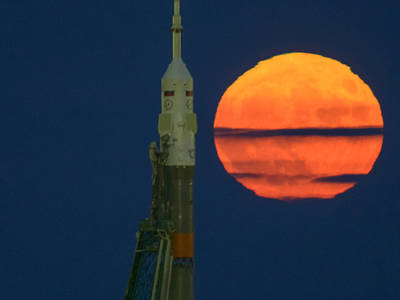The moon, or supermoon, is seen rising behind the Soyuz rocket at the Baikonur Cosmodrome launch pad in Kazakhstan, Monday, Nov. 14, 2016. NASA astronaut Peggy Whitson, Russian cosmonaut Oleg Novitskiy of Roscosmos, and European Space Agency astronaut Thomas Pesquet will launch from the Baikonur Cosmodrome to the International Space Station at 3:20 p.m. EST, Nov. 17 (2:20 a.m., Nov. 18, Kazakh time). All three will spend approximately six months on the orbital complex. A supermoon occurs when the moon’s orbit is closest (perigee) to Earth.
Photo Credit: (NASA/Bill Ingalls)
Lunes de SuperLuna, imagenes de NASA detras del cohete Soytuz en el Cosmodromo de Baikonur, Kazakhastan. el astronauta e la NASA Peggy Whitson, el cosmonauta Ruso Oleg Novitskiy y el astronauta de la Agencia espacial europea Thomas Pesquet, quien salieron con rumbo a la estacion Internacional del espacio y permaneceran alli en orbita aproximadamente 6 meses. lograron estas importantes imagenes. La Superluna ocurre cuando la orbita de la luna en su perigeo logra su paso las cercano por la tierra.


